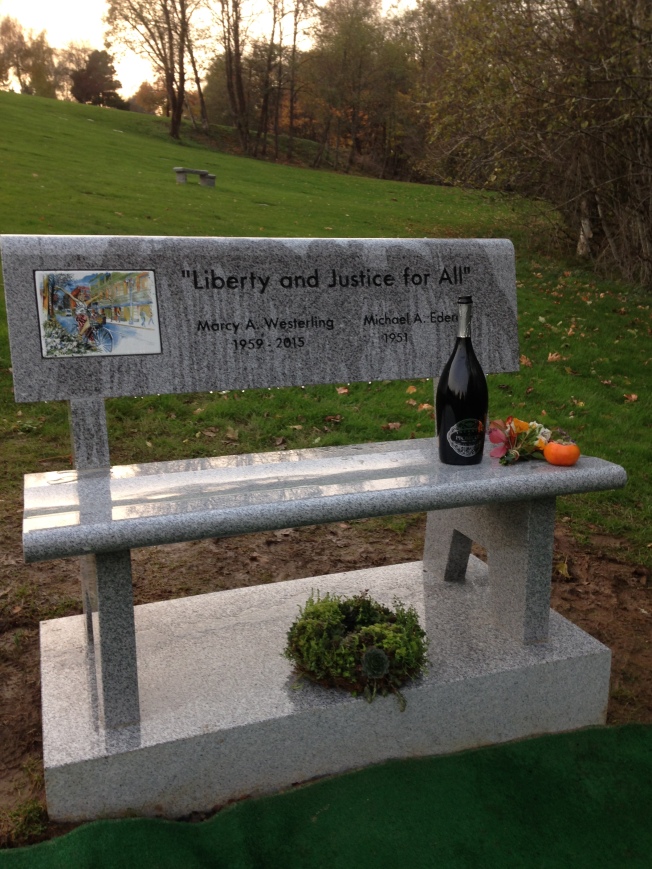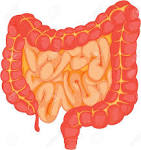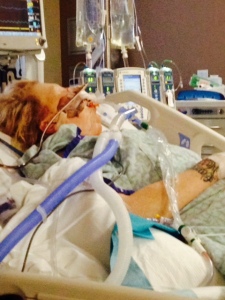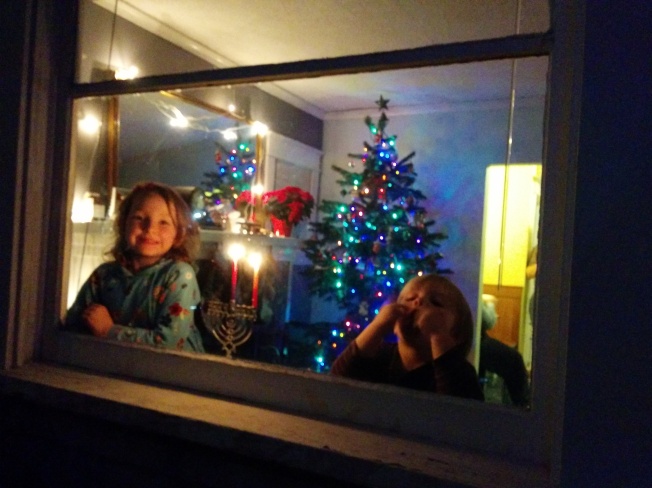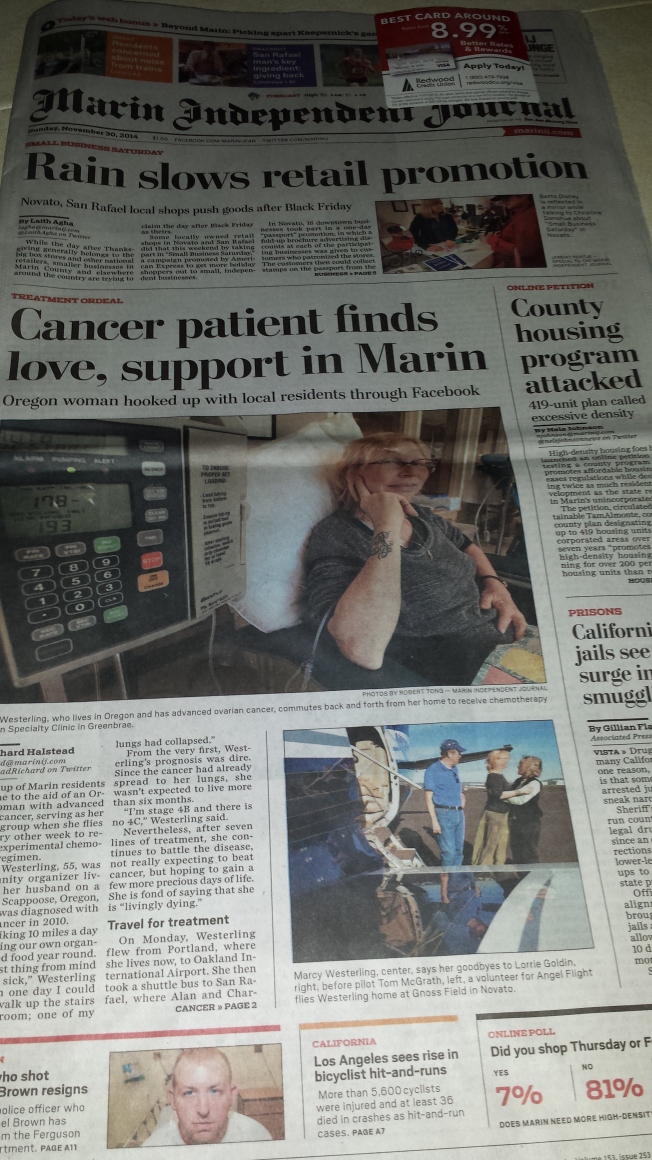 On August 23rd, as wildfire smoke cast an apocalyptic haze over the state, more than 200 mourners gathered to celebrate Marcy Westerling’s life, grieve her death, and commit to living her legacy. For those unable to join us, we’ll share elements of that love-filled five-hour gathering here on her blog. In the presence of Marcy’s legendary bicycle and flowers picked from gardens across the state, we eulogized her, viewed slideshows of her life and her death, listened to her words, shared a meal together, and danced, danced, danced.
On August 23rd, as wildfire smoke cast an apocalyptic haze over the state, more than 200 mourners gathered to celebrate Marcy Westerling’s life, grieve her death, and commit to living her legacy. For those unable to join us, we’ll share elements of that love-filled five-hour gathering here on her blog. In the presence of Marcy’s legendary bicycle and flowers picked from gardens across the state, we eulogized her, viewed slideshows of her life and her death, listened to her words, shared a meal together, and danced, danced, danced.
We talked much of the sisterhood Marcy formed around herself. Our closing speaker was the man we claim as our brother for life, her husband Mike Edera. Marcy was well pleased with the life she’d built. Her greatest regret at her early exit was that she wouldn’t be able to grow old with Mike. “We’re such a good team,” I can hear her saying to and about Mike. “Such a good team.”
~ posted by Holly Pruett
Community is the Best Legacy by Michael Edera
Once we figured out that Marcy did NOT have a bad case of bronchitis but, rather, a collapsed lung, we drove across town to have the fluid in her chest drained. As I drove, Marcy was texting and e-mailing away. I said “Honey, don’t you think we should find out what’s going on before we tell the world?”
“Are you kidding?” she said. “I never get sick. This is my big chance!”
By the time we were admitted for the procedure – called paracentesis – our dear friends Deb and Brandt were already in the room with us. From that point on, until the end, we were lifted by the hands of a loving community that never, ever let us fall. The love this community showed was manifested in just plain hard, difficult, and sometimes frightening work. I do not want to think about the hours that Holly put into managing the medical side of the house, the amount of times Pam re-arranged her life to fly out here, the hours Deb and Brandt spent by Marcy’s side, the steadfastness of her friends Kelley, and Cara, and Amy, Sarah and Grace, and Brigette, and Steph, and Susan and so many more.
Marcy understood something that I did not, at that time. As “Good People”, we all know that we have an obligation to help. But Marcy also knew that as humans, we have the right to ask for help. Think about that, it’s a big deal. It was a lesson she had learned at great cost.
On our first date, Marcy asked me who my political heroes were. I said some predictable bullshit like – Gandhi, Dr King… She told me her heroes were the women of Perugia, Italy. Then she told me the story. On one of the first days of her Junior year abroad in Italy, she was abducted and assaulted. She escaped her captors and fled down the street with them in pursuit. A group of young Arab men, street vendors (in Italy the undocumented can get no other work), put a cordon around her and protected her. When she went to the police to report the crime, the cops threw her in jail.
Somehow, word leaked out to the local feminist movement that a foreigner was in jail for trying to press rape charges. They canvassed all the jails in town, found Marcy, helped to get her released. Then they stayed with her, and supported her through the whole trial, which resulted in a conviction. It was an experience and a lesson that would inform the rest of her life.
That’s why, years later, as a thirty-something, single woman living out, as a lesbian, in small-town Oregon, when she ran into the Oregon Citizens Alliance gathering signatures for the vicious anti-gay ballot measure 9 at the town’s only grocery store, at the post office, where she could not ignore the thing, she reached out to Susan Pharr and Scott Nakagawa and Tarso Ramos and others for help. It was this small group of visionary people that went on the road to create the template for what became the Rural Organizing Project. She understood that people would respond if you asked for help, and you had the right to ask.
There was no difference between Marcy and Marcy-the-political-person. It was always a personal response to real life experience for her, never abstract theory.
In the last five years of her time, she brought all her skills to the fight against cancer. She asked for, and received help again and again. From oncologists, surgeons, complementary healers, researchers. There was nowhere she was afraid of going, nothing she would not consider. At the same time, she reached out and found people all over the country to support, to draw into community, to put their heads together to try and figure out the path through this wilderness that cancer patients enter.
She had ‘Cancer Warrior’ tattooed on her arm. I hate tattoos, but she didn’t consult me and I had to admit it was an apt one. She fought her battle the way Bruce Lee advised when he said:
“The great mistake is to anticipate the outcome of the engagement; you ought not to be thinking of whether it ends in victory or defeat. Let nature take its course, and you will strike at the right moment.”
She struck at the right moment again and again. She showed consummate skill. As was her way, she drew us all into the fight: The wonderful Deb and Brandt, the irreplaceable Holly, Amber, Cara and Amy, Chris, Leo and Cora, Jess, Sarah, Kelley, Brian and Quinn, Grace, Brigette, Finn, Jack, and Thalia and Mike, Mary Lee, Donna and Jan, Baker and Eve, Doodle and Susan, Julia and Thomas, Jamie Dawson, Chip and Nancy, David and Elaine, Joe and Lisa, Darrel and Diana, her friends from the Livingly Dying group including the wonderful Kim and Roz and Adele, the political associates and colleagues who constantly checked in on her well being, Ramon Ramirez, Scott Nakagawa, Susan Pharr, Tarso Ramos, Gary Delgado, Eric Ward, Jenny Levinson, Kathleen Saadat, Madeline Talbot, Barbary Dudley, Cathy Howell and so many others, the scores of friends she made on her blog, too numerous to mention individually by this frazzled guy, her hosts from around the country – Sharon in Philly, Sylvia and Bill in Marin Co, Kate and Michael in San Jose, and Thomas who helped us so much, the pilots of Angel Flight who flew her around like a rock star for free, her great, and noble sister Pam – who fought for her in a way that is impossible to describe and Pam’s daughter Kathryn, our brother in law Steve, our niece Nina who loved her so much, her brother Randy, her mother Mary who was there with her from the beginning to the end, her Dad Karel and Step Mom Doris who helped us so much, her cousin Colette, my family who made it possible for me to keep going – sister Terry, brother-in-law Gary, nephew Chris who spent long hours with us in San Jose, niece Claire who made herself available again and again, niece Mia who was always so loving to us, sister-in-law Peg with a lot of hard-learned, indispensable wisdom, my brother Fred, who passed on ahead of Marcy, Vida Lee, my son Jonah who shouldered my whole work load, and my oldest friend Katherine who kept the business from flying apart, and many, many people who I am forgetting to mention.
You can see that she raised an army for her last fight even if she was defeated by a much more powerful foe.
I don’t know what comes now. I look ahead and the future is dark, murky, smoky you might say. It’s not just my personal grief. We are entering into difficult times.
Whatever happens, let’s remember how large a community we have built, from family, friends, political comrades who are also friends, from care givers and plain old generous people who reached out when asked to help. Let’s remember that we have an obligation to help out, and we also have the right to ask for help. It’s around those two ideas that we hope to build Marcy’s living legacy.
We want the lessons of organizing community – which literally were the lessons of survival for Marcy – to have the widest possible reach. So that when people look for help in confronting unaccountable power, help is there, put together by a self-aware community, because community is the best legacy for the work we do.

 My late wife Marcy liked to describe herself as a ‘kick-ass community organizer’. We met doing the work of speaking up for social justice and progressive values in rural Oregon, where Marcy founded the Rural Organizing Project. Here’s how I would compare us: If I was a pretty good basketball player in neighborhood pick-up games, Marcy was an NBA first-round-draft pick.
My late wife Marcy liked to describe herself as a ‘kick-ass community organizer’. We met doing the work of speaking up for social justice and progressive values in rural Oregon, where Marcy founded the Rural Organizing Project. Here’s how I would compare us: If I was a pretty good basketball player in neighborhood pick-up games, Marcy was an NBA first-round-draft pick.